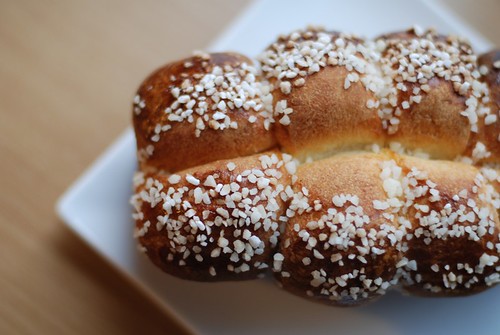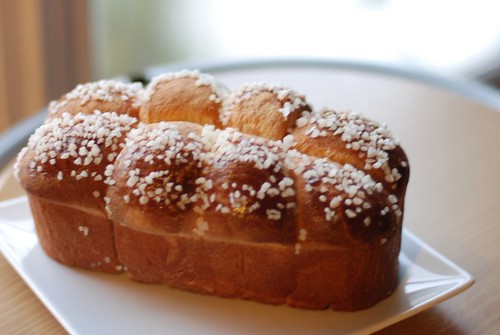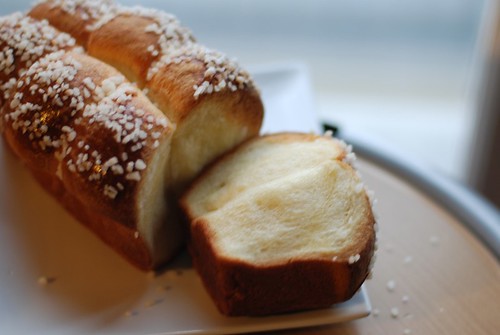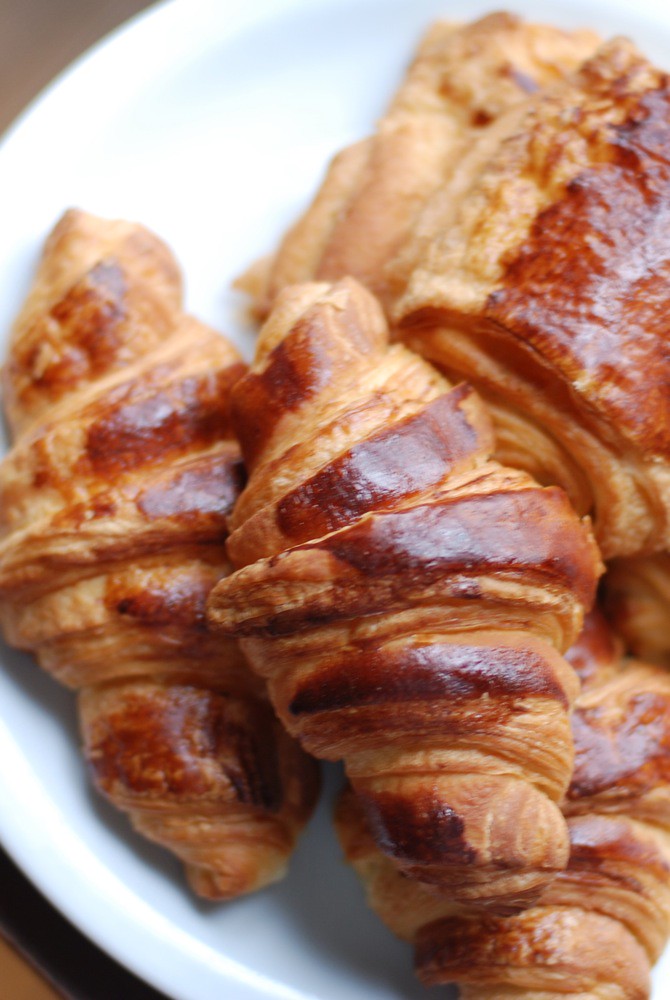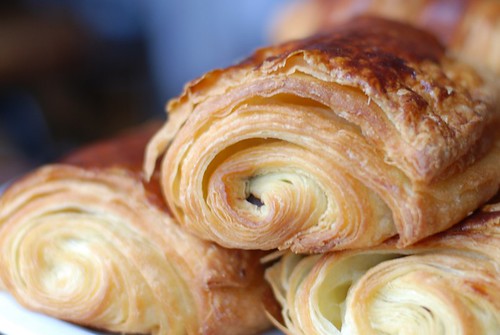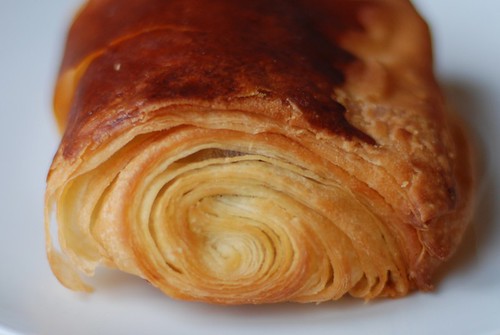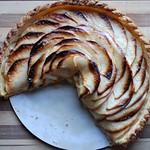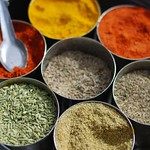
Tasting a 2004 vintage at Pommery Estates
The best part about planning for Terence’s visit to Paris over Canadian Thanksgiving and his birthday, was the day trip to the Champagne region. The region is not too far away from Paris. The drive to Reims, the main hub for champagne winery visits, took about an hour and a half. We eagerly booked a car with unlimited mileage, and found enthusiastic participants to pile in and use up the seat belts with us for the day.
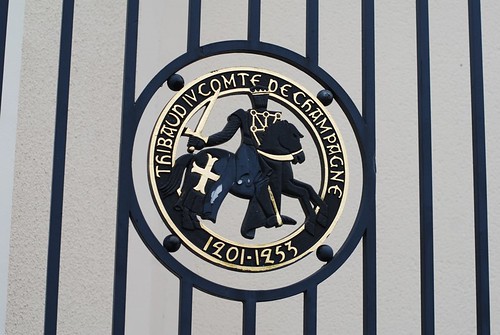
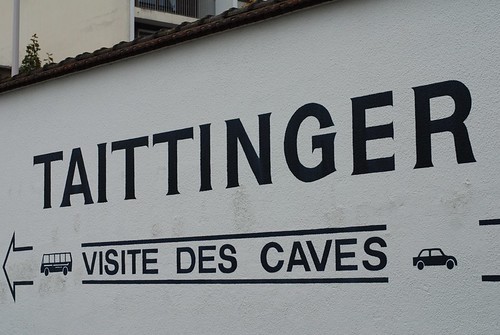
One word about going to Champagne – book desired winery tours as far in advance as possible. We were rejected by Ruinart and Veuve, even though I emailed/called about two weeks in advance for a weekday visit. Left with fewer choices, we started the morning at Taittinger.
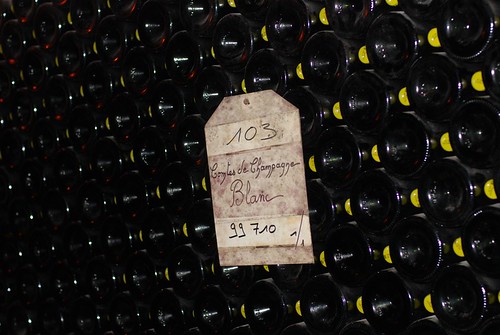
Taittinger is actually known for its history-rich tour. Set on an old monastery site, there are still traces of the demolished building in the cellars. The lady who showed us around was very knowledgeable about the history of the area, and from her attitude we could tell she was really passionate about her job. We wandered through the cellars, amidst hundreds of thousands of meticulously stacked bottles sitting there to age.
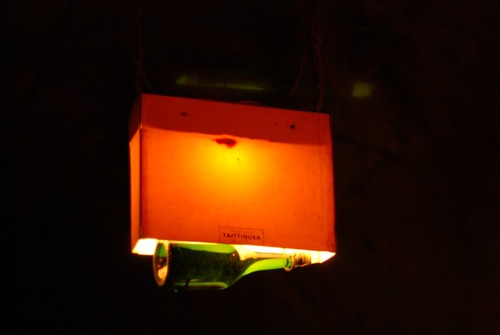
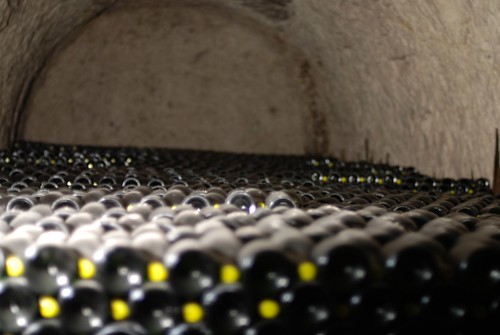
An idea of how deep the stacking goes!
After listening to the champagne-making process, I have full appreciation for why each bottle of bubbly is as pricey as it is. Honestly, this stuff takes time, and work! To drain the bottles of yeast, the wineries employ manual labour to hand-turn the bottles daily, for at least a month straight (can’t remember the exactly number of days). Each worker on average turns 18,000 bottles only each day, so yeah, that’s a lot of work, and a lot of people involved, to manage the millions of bottles sold each year worldwide. From what we heard from the wineries, the final aging period for champagne is 15 months minimum, while some of the higher-end vintages age for at least seven years.
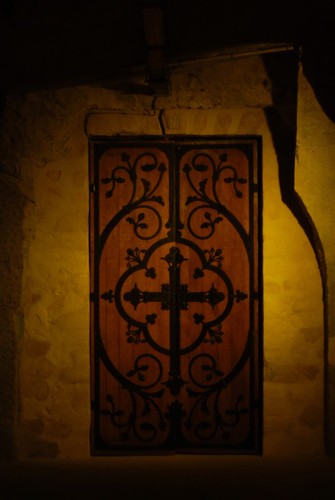
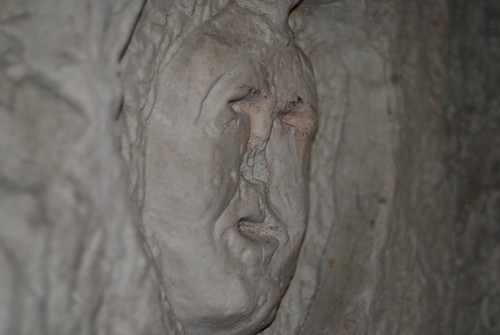
Door from the 13th C. in Taittinger cellars, and stone carving in the quarry from the monastery remains
We stopped in the town centre for lunch. By then, the weather had turned dramatically from foggy and rainy in the morning to sunny with clear blue skies. We sat out in the sun for a while after lunch, then wandered over to the Notre Dame in Reims. “The other Notre Dame” was glorious. It was not as crowded as the one in Paris, but just as majestic inside. I daresay it’s even better than the one in Paris, because there are three panes of stained glass in the back of the cathedral done by Marc Chagall! It was so neat to be able to see a famous artist’s work at that scale up close, without any crowds.


After our self-guided wandering of Reims city centre, we drove to Pommery Estates. We had tried to squeeze ourselves in to Ruinart earlier, but the security guard at the gates was unable to assist us because our French really wasn’t that spectacular to explain our hopes and dreams for a day-of cancellation since nobody answered the phone when we called ahead to check. That, and the tour staff were at lunch, so he couldn’t get any answers for us.
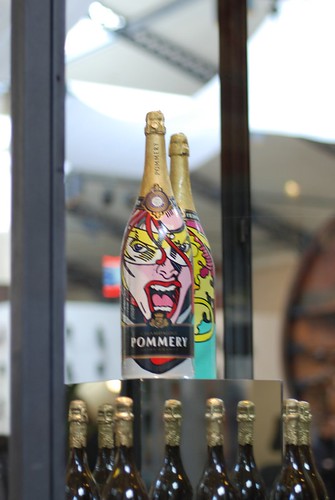
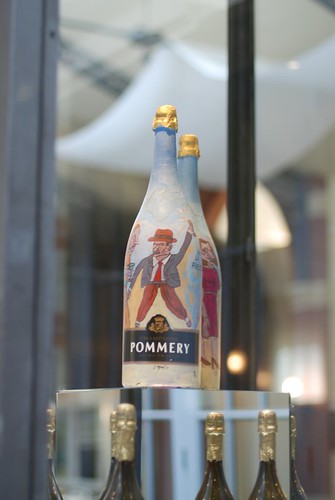
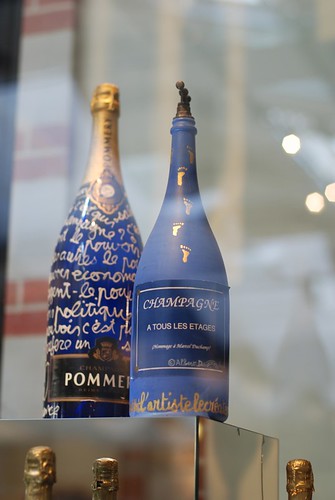
Pommery is definitely all about the art!
Pommery Estates turned out to be the most fun winery tour ever! The outside is quirky, like a fairytale castle, but once inside we could tell immediately that art was a huge focus. Aside from the colourful bottles decorating the walls, there were some interesting art installations in the big open space just outside the cellar entrance. When our guide showed up and began speaking, I got a case of the giggles. The tour guide was tall and all arms and legs, which reminded me of an uncoordinated baby deer. His French accent was so strong that even though he was speaking English, I could barely understand him…hence the giggles.
Inside the cellars, we learned about the eccentric Madame Pommery who inherited the estates from her husband – he passed away shortly after starting the business. She’s the one who infused all the colourful personality into the business, and grew the brand so quickly that they went from selling a couple hundred thousand bottles a year to millions within a few years of her taking over. Nowadays, the focus on artistic differentiation can be observed through the amazing art installations on the tour.
There were at least 10 to 15 installations along the way, some really modern-arty and difficult to understand, and some just downright funny. I don’t have pictures of the most memorable ones, unfortunately. The best one was the microphone at the bottom of a champagne bottle with speakers to amplify the noises champagne makes…it’s hilarious! It sounded like Dory speaking Whale from Finding Nemo, except in a much louder and more obnoxious nasal voice.
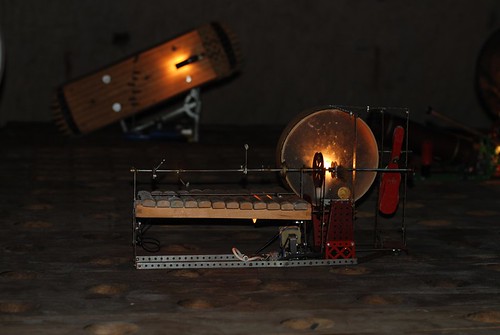

An automatic band using instruments built from different pieces of recycled materials & original stone carving
A really fun installation was the super-tall swing in one of the areas which might’ve been a quarry at some point. We all got to take a turn on the tire swing, which was pretty neat.
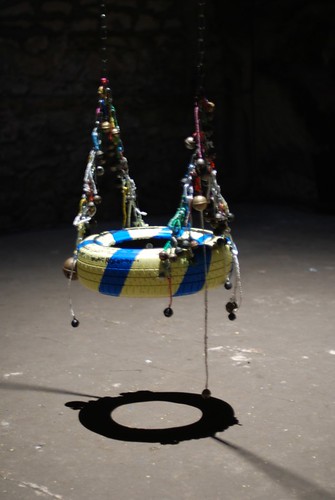

Precious vintages locked away…
The worst art installation on the tour was the one that made me scream. The pieces of art were all automatically activated by motion sensors, and there was one from a dark, unused “cave” that imitated dogs barking at night. I sauntered ahead of the group with my friend, past this “cave”, and screamed when the angry dogs began barking to my right. My friend jumped. Everyone behind us laughed their heads off at our expense.
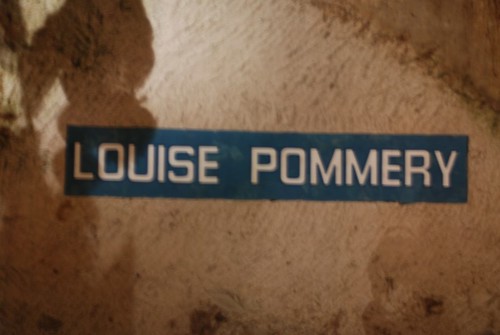

At the end of the tour, we tried the 2004 vintage champagne. The good thing about Pommery was that we could pick which champagne we wanted to taste with our tour, and the prices ranged accordingly. We chose a vintage because at Taittinger, everyone got the same basic champagne that’s produced annually. As soon as we tasted this, I knew I loved it. It was much smoother and a softer texture than the previous one. It wasn’t acidic at all, but crisp nonetheless. I then enabled Terence to go buy a 20 euro glass of the most prized vintage, the 1999 Louise named after Madame Pommery. That, was amazing. I would highly recommend a tour of Pommery Estates, and even more so, a glass of this delicious champagne. It is actually reasonably priced per bottle compared to some of the “big names”, and for the taste, the price is definitely worthwhile, in my humble opinion.
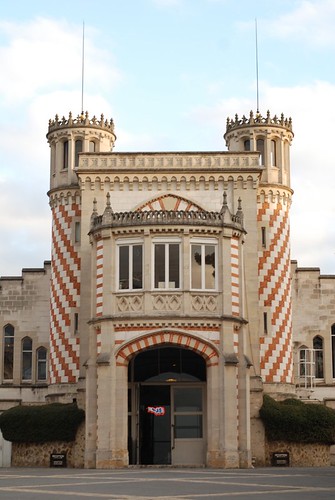
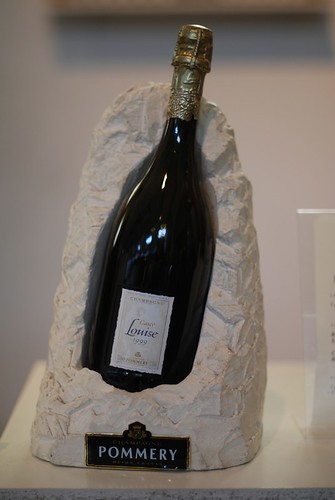
All in all, it was a successful outing to the Champagne region. We drove through the smaller towns on our way back for the “scenic route”, but everyone in the back fell asleep on this beautiful drive. I would like to try the scenic route again, though, because there were lots of small champagne producers along the way, and I would’ve loved to stop in some of them to sample the different champagnes.
We ended the night with some heavily seasoned Chinese food in Paris to offset all the delicate sweetness from drinking champagne all day. Alex was extremely glad to have survived driving in Paris, and now we’re excited to do more driving trips outside of Paris!
